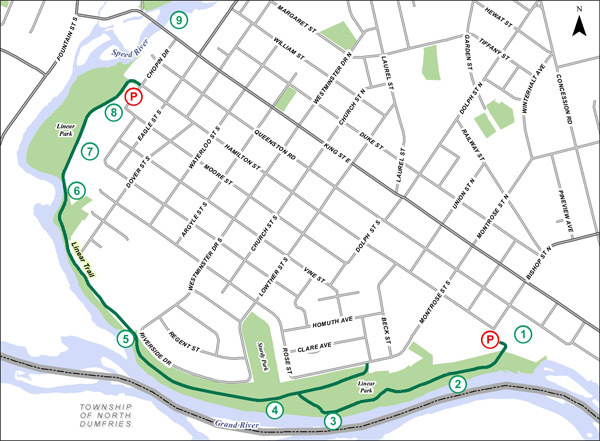Always bringing me back
 Consider the simple linear map
L
:
x
→
a
x
+
b
where
a
=
4
/
7
, and
b
=
5
. Starting at some initial point
X
0
, we move to our next point
X
1
according to
X
1
→
L
(
X
0
)
.
Consider the simple linear map
L
:
x
→
a
x
+
b
where
a
=
4
/
7
, and
b
=
5
. Starting at some initial point
X
0
, we move to our next point
X
1
according to
X
1
→
L
(
X
0
)
.
Suppose we iterate the map infinitely many times, ending up at X ∞ , what is the value of X ∞ ?
The answer is 11.666666667.
This section requires Javascript.
You are seeing this because something didn't load right. We suggest you, (a) try
refreshing the page, (b) enabling javascript if it is disabled on your browser and,
finally, (c)
loading the
non-javascript version of this page
. We're sorry about the hassle.
1 solution
Moderator note:
Always be careful when interchanging limits and summation / integration / differentiation.
For example, consider the sequence of numbers a i , j = i 1 if j ≤ i , 0 otherwise.
Then, lim i ∑ j a i , j = lim i 1 = 1 but ∑ j lim i a i , j = ∑ j 0 = 0 .
Hello Challenge Master,
Thanks for reviewing my solution.
I agree with you that one should be careful when interchanging limits and summation / integration / differentiation. However I did not understand the example. What does lim i 1 mean?
I don't see where I have interchanged the limits and summation in my solution. Are you referring to the step lim ( a n X 0 + b ∑ i = 0 n − 1 a i ) = lim a n X 0 + lim b ∑ i = 0 n − 1 a i ? I can do that because both the limits exist and are finite; am I right?
I have also added another solution (Solution 2). It seems to be much simpler. Can you review it?
Thanks
Nice question, but why is this in the physics section.
Solution 1: According to the definition, X 1 = L ( X 0 ) = a X 0 + b
X 2 = L ( X 1 ) = a X 1 + b = a ( a X 0 + b ) + b = a 2 X 0 + b ( 1 + a )
X 3 = L ( X 2 ) = a X 2 + b = a ( a X 1 + b ) + b = a 3 X 0 + b ( 1 + a + a 2 )
Observation: In general, we can write X n as
X n = a n X 0 + b i = 0 ∑ n − 1 a i
Now X ∞ = n → ∞ lim X n = n → ∞ lim ( a n X 0 + b i = 0 ∑ n − 1 a i )
Since ∣ a ∣ < 1 , n → ∞ lim a n = 0 . Also, n → ∞ lim b i = 0 ∑ n − 1 a i = b × 1 − a 1
Therefore, X ∞ = 1 − a b = 1 − 7 4 5 = 3 3 5 □
Solution 2: Draw graphs of L 1 : y = L ( x ) and L 2 : y = L − 1 ( x )
Start with the point ( X 0 , L ( X 0 ) ) , i.e. ( X 0 , X 1 ) . If we take a reflection of this point off the y = x line, we obtain the point ( X 1 , X 0 ) . Then we move parallel to the y axis until we reach the line y = L ( x ) . We will meet at the coordinates ( X 1 , X 2 ) . We then move to ( X 2 , X 1 ) and then ( X 2 , X 3 ) . This is shown in the graph below.
If we continue this process infinitely many times, we can show that we will be converging to a point. Because after every iteration, the area of the triangle formed by the lines L 1 , L 2 and line joining points ( X n , X n + 1 ) and ( X n + 1 , X n ) decreases and the triangle converges to a point. We then reach the point ( X ∞ , X ∞ ) . At this point, the x coordinate is equal to the y coordinate is equal to X ∞ , since for very large n , X n = X n + 1 .
We substitute x = y = X ∞ in y = a x + b .
X ∞ = a X ∞ + b . Therefore X ∞ = 1 − a b . □ .